I am currently experiencing a small problem with GStreamer, here are more details:
Configuration:
- Intel i7-6700
- Intel HD Graphics 530
- Ubuntu 18.04 LTS
- GStreamer1.0
- VAAPI plugin
I receive a UDP stream from a video source, this stream is sent in RAW UYVY format. Here is my command line to decode it:
gst-launch-1.0 -v udpsrc port="1234" caps = "application/x-rtp, media=(string)video, clock-rate=(int)90000, encoding-name=(string)RAW, sampling=(string)YCbCr-4:2:2, depth=(string)8, width=(string)1920, height=(string)1080, colorimetry=(string)BT709-2, payload=(int)96, ssrc=(uint)1188110121, timestamp-offset=(uint)4137478200, seqnum-offset=(uint)7257, a-framerate=(string)25" ! rtpvrawdepay ! decodebin ! queue ! videoconvert ! xvimagesink
Problem as we can see on the screenshot below, the CPU load (right) is far too high for this kind of task and we can see the GPU load (left) which is almost zero.
To overcome this problem, I want to use the VAAPI graphics acceleration as I did in a previous project with H264 of which here is the command line below:
gst-launch-1.0 -v udpsrc port=1234 caps= "application/x-rtp, media\=(string)video, clock-rate=(int)90000, encoding-name=(string)H264, packetization-mode=(string)1, profile-level-id=(string)640028, payload=(int)96, ssrc=(uint)2665415388, timestamp-offset=(uint)3571350145, seqnum-offset=(uint)18095, a-framerate=(string)25" ! rtph264depay ! queue ! vaapih264dec low-latency=1 ! autovideosink
The line above works perfectly and the CPU has almost no more loads. So I adapt this command line to use it with a RAW stream, here is the command:
gst-launch-1.0 -v udpsrc port="1234" caps = "application/x-rtp, media=(string)video, clock-rate=(int)90000, encoding-name=(string)RAW, sampling=(string)YCbCr-4:2:2, depth=(string)8, width=(string)1920, height=(string)1080, colorimetry=(string)BT709-2, payload=(int)96, ssrc=(uint)1188110121, timestamp-offset=(uint)4137478200, seqnum-offset=(uint)7257, a-framerate=(string)25" ! rtpvrawdepay ! vaapidecodebin ! videoconvert ! xvimagesink
It is the same line as the one at the beginning but I changed the element decodebin by vaapidecodebin as I had replaced avdec_h264 by vaapih264dec for my H264 stream. Unfortunately it doesn't work and I end up with this error:
WARNING: wrong pipeline: unable to connect rtpvrawdepay0 to vaapidecodebin0
How I can solve this problem? Do you have any leads to solve this problem?
